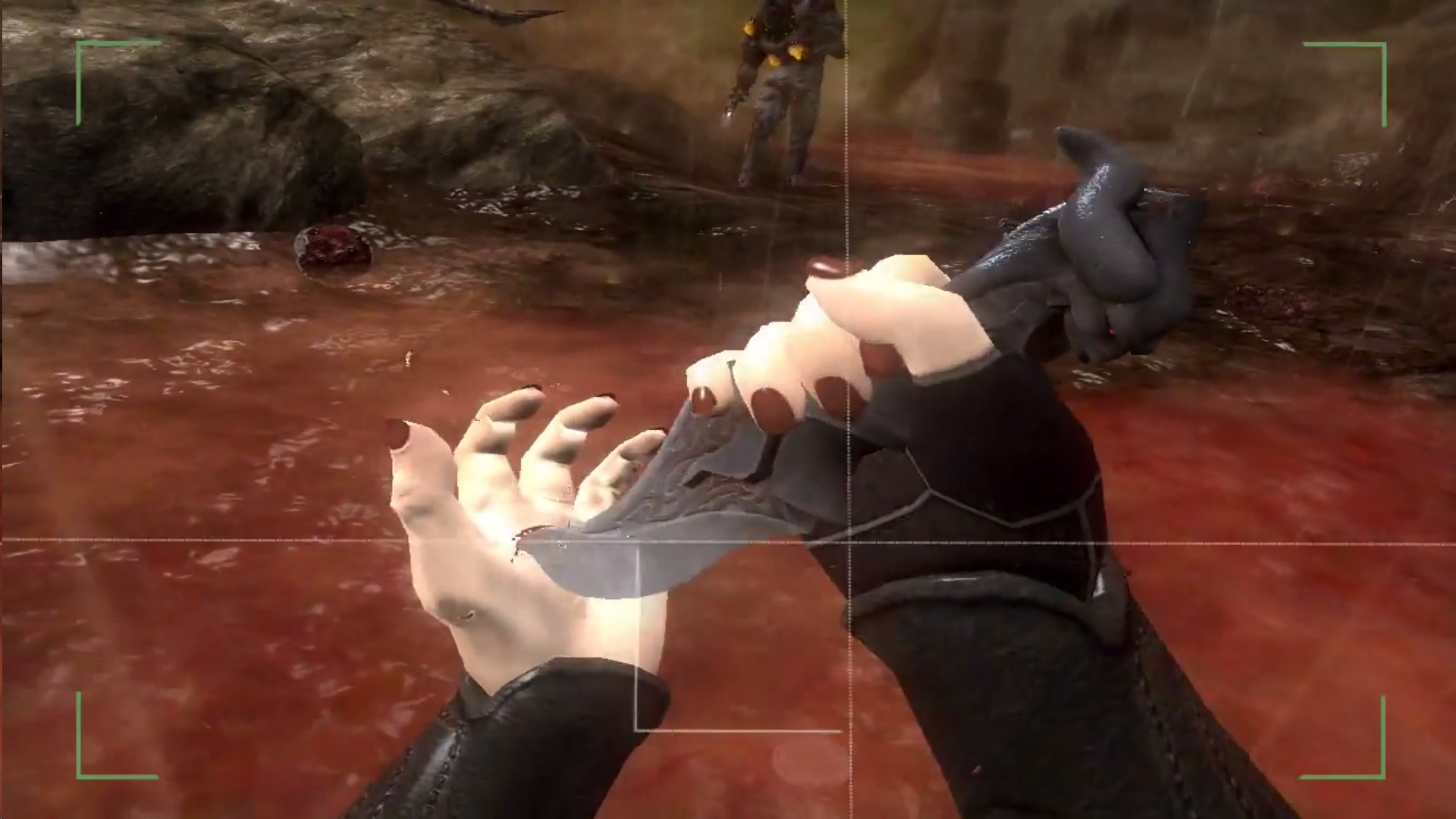On Blood
Ah, blood. If guns are the protagonists of the first-person genre, blood is the deuteragonist, the damsel-in-distress the player needs to liberate from his opponent’s bodies. It’s a character like any other, a liquid life-force with a relationship to both the player and the world around him.
The shooter genre seems almost unhealthily obsessed with it. As this mini-documentary covers in great detail, gore has been a cornerstone of gaming for decades, harking almost back to the beginning:
But in this article I’m actually more interested in blood as a game mechanic. Because blood is often more than just a cosmetic. In many games, a blood spatter might be the only indicator there was once a human being standing here, even after the corpse has faded from sight. Many games retain these blood spatters because their effect on memory usage is minimal but it clues the player into where they’ve been. If you walk into a hallway full of blood spatters and uncollected ammo, you should make sure you’re not accidentally backtracking.
Blood is also commonly used as a very light penalty for close-range combat, as your melee-range victim sprays his blood all over your camera for a few moments. Sure, that hasn’t stopped anyone from cleaving their target in twain with a melee weapon, but the very brief moments of reduced visibility is a subconscious reminder to the player that maintaining distance is a good survival tactic. To that same effect, if the blood on the screen is yours, you’re low on health and better find cover or are already dead.

These are both relatively intuitive uses of blood that probably emulate real life well enough, but this correlation between blood and its owner’s life extends beyond death. In many shooters blood can serve as an objective that passes its life-giving powers onto he who steals it. In the granddaddy of FPSes, Wolfenstein 3D, you can drink enemy bloodstains to get a hitpoint back at low health. Bioshock Infinite has a shirt equippable called “Blood to Salt” that gives the player salt for killing enemies. The first melee unlock in Team Fortress 2 was the Ubersaw, which gives the Medic Ubercharge for killing enemies. Unlike the bonesaw it replaced, the Ubersaw’s model is stained with blood.

All of this reinforces the same concept: blood is valuable. Sometimes it’s more valuable than even the person it once belonged to. This isn’t even restricted to the fantasy/supernatural genre; in Payday:The Heist the entire objective of the “No Mercy” heist is to steal blood samples from a hospital patient, and your contractor is paying you millions for every sample. And, when you think about it, this all makes sense. After all, what is a gun but a way to less-than-surgically extract blood from others? Just like you’d be hard-pressed to find a rhythm game that glosses over the music, or an erotic game that glosses over the orgasm, a shooter that glosses over the blood isn’t utilizing its instruments to their full potential.
This article is part of my “On Shooters” series, where I compare multiple games by focusing on a specific game mechanic or developer objective. To read the rest, click here!